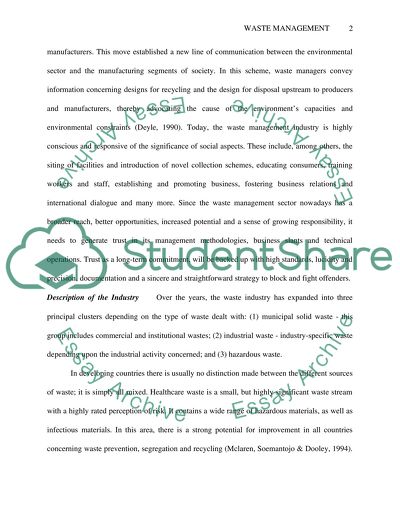Cite this document
(“Waste Management (Firm Analysis) Essay Example | Topics and Well Written Essays - 2500 words”, n.d.)
Retrieved from https://studentshare.org/miscellaneous/1536578-waste-management-firm-analysis
Retrieved from https://studentshare.org/miscellaneous/1536578-waste-management-firm-analysis
(Waste Management (Firm Analysis) Essay Example | Topics and Well Written Essays - 2500 Words)
https://studentshare.org/miscellaneous/1536578-waste-management-firm-analysis.
https://studentshare.org/miscellaneous/1536578-waste-management-firm-analysis.
“Waste Management (Firm Analysis) Essay Example | Topics and Well Written Essays - 2500 Words”, n.d. https://studentshare.org/miscellaneous/1536578-waste-management-firm-analysis.


